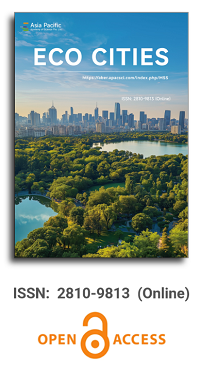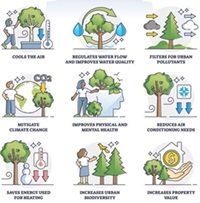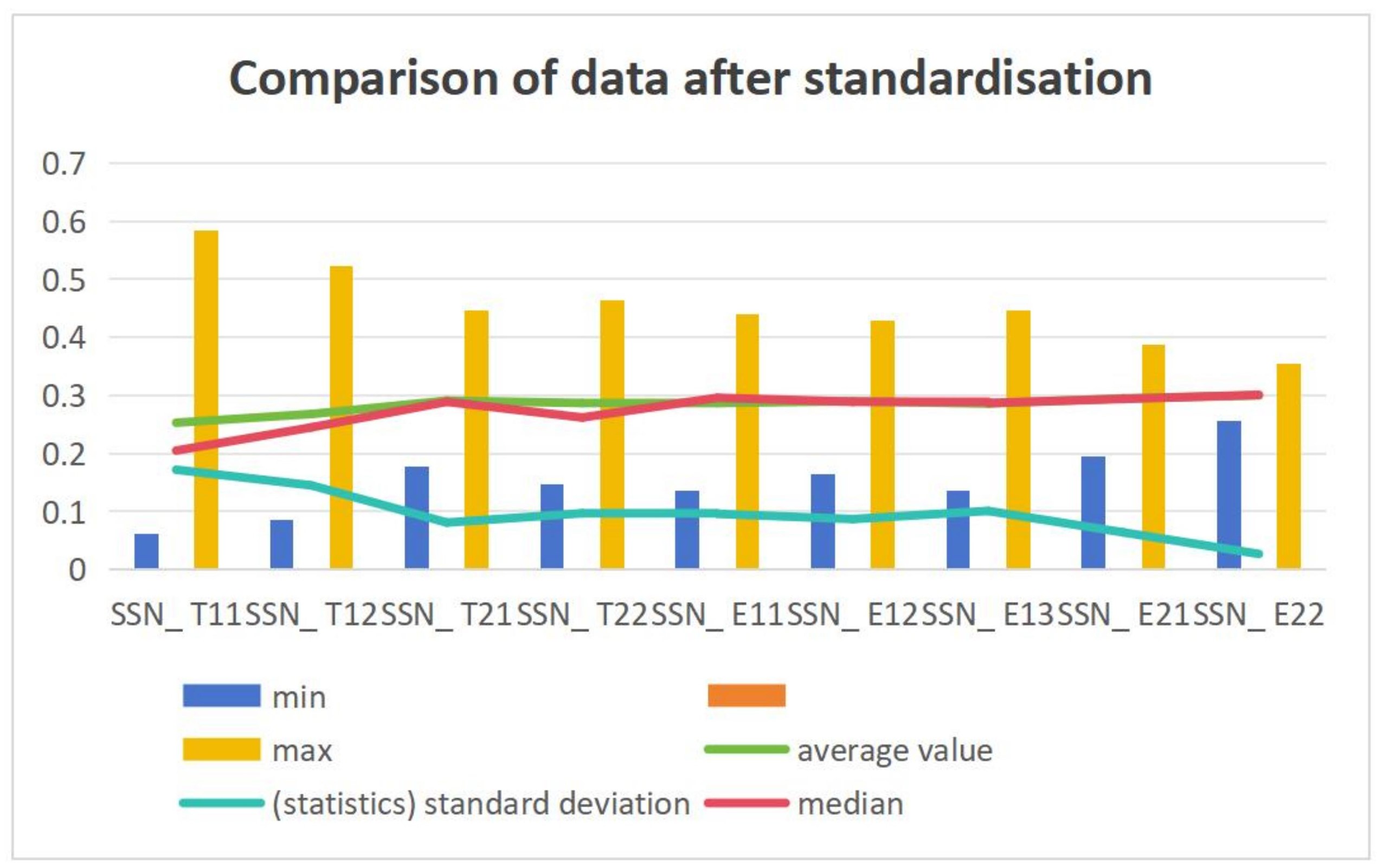


Urban indicators of Peru’s atoll metropolitan area and its impact on urban sustainable development
Vol 2, Issue 2, 2021
Download PDF
Abstract
The purpose of the study is to determine the impact of urban indicators on the sustainable development of the Atoll metropolis in the Junín region, Peru, including the impact of its specific urban composition and territorial allocation, natural resource management, social cohesion, and economic development on urban sustainable development. Three methods were used: the first was the evolution map indicator and census information system the second was the method record of testing the integrated urban indicator system of urban planning from 1961 to 2011, and the third was the method of estimating the sustainable development level of the territory, according to the 2008 biography prepared by the Inter American Institute of Agricultural Cooperation. The following results were achieved: The bulk density of 115.87 inhab/ha in 1961 decreased steadily in 2011, reaching 93.67 inhab/ha. The comparative urban planning from 1961 to 2011 decreased from 14 indicators obtained to only one indicator applicable. It was noted that 13 indicators were not applicable due to method defects, and monitoring was not allowed due to a lack of reliability. Finally, the biography showed the trend toward urban stability. The results show that the urban indicators are practical, which shows the degree of impact on the current and predictable situation of urban human settlements. Although this situation has achieved vegetation growth in an inert and spontaneous way, it has led to an improvement in sustainability in the medium term.
Keywords
References
- Martínez Vitor CF. Vulnerabilidad ambiental en el Valle del Mantaro por las actividades urbanas (Spanish) [Environmental vulnerability in the Mantaro Valley due to urban activities]. Colegio de Huancayo, Peru: CFMV; 2006.
- Ministry of Housing Construction and Sanitation. Sistema Nacional de estandares de urbanismo (Spanish) [National urban design standard system]. Lima, Peru: MHCS; 2011.
- United Nations Conference on Environment and Development. Informe de la conferencia de las Naciones Unidas sobre el Medio Ambiente y el Desarrollo en Rio de Janeiro (Spanish) [Report on the United Nations Conference on Environment and Development in Rio de Janeiro]. New York: UNCED; 1992.
- Ministry of Housing Construction and Health. Re-glamento de Acondicionamiento Territorial y De-sarrollo Urbano Nº 022-2016-Vivienda (Spanish) [Regulation of land development and urban de-velopment No. 022-2016-Housing]. Lima, Peru: MHCH; 2016. p. 45.
- Velasquez L. Propuesta de Una Metodología de Planificación para el Desarrollo Urbano Sostenible y Diseño de un Sistema de Evaluación de la Sostenibilidad de las ciudades Medianas de América Latina (Spanish) [Recommendations on sustainable urban development planning methods and design of sustainability assessment system for medium-sized cities in Latin America] [PhD thesis]. Barcelona, Spain: Catalonia Polytechnic University; 2003.
- Barnett C, Parnell S. Ideas, implementation and indicators: epistemology of the post-2015 urban agenda. Environment and Urbanization 2016; 28(1): 87–98.
- Kitchin R, Laurier TP, Mccardle G. Knowing and governing cities through urban indicators, city benchmarking and real-time dashboards. Reg-istration Study Registration Science 2015; 2(1): 6–28.
- Turku C. Re-thinking sustainability indicators: Local perspectives of urban sustainability. Journal of Environment Plan and Management 2013; 56(5): 695–719.
- UN-HABITAT/ROLAC. Guia de Aplicación: Sistema Integrado de Indicadores Urbanos, Observatorio de Medio Ambiente Urbano (OMAU), Ayuntamiento de Málaga (Spanish) [Application Guide: Integrated Urban Indicators System, Urban Environmental Observatory (OMAU), Malaga City Council]. Malaga: Observatorio; 2006.
- Manher M, Bunge M. Fundamentos de Biofilosofía (Spanish) [Fundamentals of biotechnology]. Mexico: Siglo XXI Editores; 2000.
- Gallopin G. Los indicadores de desarrollo sostenible: Aspectos conceptuales y meto-dológicos (Spanish) [Sustainable development indicators: Conceptual aspects and methodology]. FODEPAL Project Expert Seminar on “Sustainability Indicators in Policy Formulation and Monitoring”; 2006 Oct 4–6; San-tiago. Chile; 2006. p. 36.
- McHarg I. Proyectar con la Naturaleza (Spanish) [Projecting with Nature]. Barcelona, Spain: Gustavo Geely; 2000.
- Oficina Nacional de Planificación y Urbanismo. “Reactualización Plan Regulador de Huancayo 1954–1980” (Spanish) [Updating of the Regulatory Plan of Huancayo 1954–1980]. Huancayo: PDU; 1960.
- Consejo Provincial de Huancayo y Ministerio de Vivienda y Construcción. Plan director de Huancayo 1976–1985 (Spanish) [Huancayo Master Plan 1976–1985]. Huancayo: PDU; 1976.
- Municipalidad Provincial de Huancayo. Reajuste del Plan Director de la Ciudad de Huancayo 1986-1995 (Spanish) [Readjustment of the Master Plan for the City of Huancayo 1986–1995]. Huancayo: PDU; 1991.
- Municipalidad Provincial de Huancayo e Instituto Nacional de Desarrollo Urbano. Plan Director De Huancayo 1996–2005 (Spanish) [Huancayo Master Plan 1996–2005]. Huancayo: PDU; 1996.
- Municipalidad Provincial de Huancayo. Plan de Desarrollo Urbano 2006–2011 (Spanish) [Urban Development Plan 2006-2011]. Huancayo: OMNº 450–CM/MPH; 2006. p. 316.
- Municipalidad Provincial de Huancayo. Plan de Desarrollo Metropolita Nº (Spanish) [Metropolitan Development Plan No.]. Huancayo: PDU; 2016.
- Sepúlveda S. “Metodología para estimar el nivel de desarrollo sostenible de territorios”, El Biogram (Spanish) [“Methodology for estimating the level of sustainable development of territories”, the Bio-gram]. San José, Costa Rica: IICA; 2008.
- Oficina Nacional de Estadística y Censos. Censos Nacionales Poblacion, Vivienda y Agropecuario 1961 (Volumen XI: Departamento de Junín) (Spanish) [Censos Nacionales Poblacion, Vivienda y Ag-ropecuario 1961 (Volume XI: Department of Junín)]. Lima, Perú: Vivienda Agropecuario; 1970.
- Dirección de Censos, Muestreo y Encuestas Especiales. Censos nacionales VII de población II de vivienda 4 de Junio de 1972: Departamento de Junin (Spanish) [National Census VII of population II of housing June 4, 1972: Department of Junin]. Lima: Oficina Nacional de Estadística y Censos (ONEC); 1975.
- Instituto Nacional de Estadística. Censos Nacionales VIII de Población y III de Vivienda (Spanish) [National Population Census VIII and Housing Census III]. Lima, Perú: Direcciones Generales de Censos y Encuestas; 1984.
- Instituto Nacional de Estadística e Informática (INEI). Sistema de recuperación de Datos Censos nacionales IX de Población y IV de Vivienda 1993 (Spanish) [Data Retrieval System National Census IX of Population and IV of Housing 1993]. Perú: Censo de Población y vivienda; 1993.
- Instituto Nacional de Estadística e Informática (INEI). Censos nacionales 2007 XI de Población y VI de Vivienda (Spanish) [National Census 2007 XI of Population and VI of Housing]. Perú: Sistema de consulta de Datos de Centros Poblados (CCPP) y población Dispersa; 2007.
Supporting Agencies
Copyright (c) 2021 Cesar Fortunato Martínez Vitor
License URL: https://creativecommons.org/licenses/by/4.0

This site is licensed under a Creative Commons Attribution 4.0 International License (CC BY 4.0).

Chinese Academy of Sciences, China
Indexing & Archiving
Asia Pacific Academy of Science Pte. Ltd. (APACSCI) specializes in international journal publishing. APACSCI adopts the open access publishing model and provides an important communication bridge for academic groups whose interest fields include engineering, technology, medicine, computer, mathematics, agriculture and forestry, and environment.



.jpg)

.jpg)



